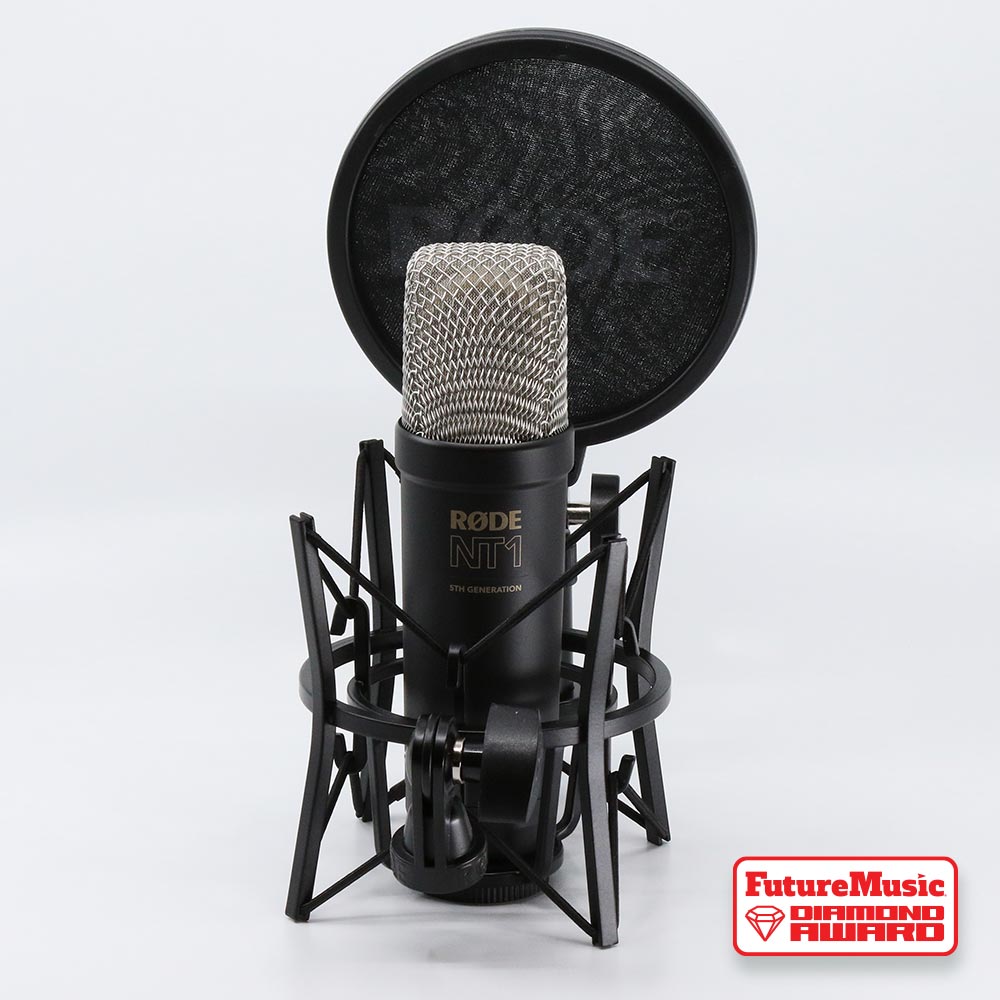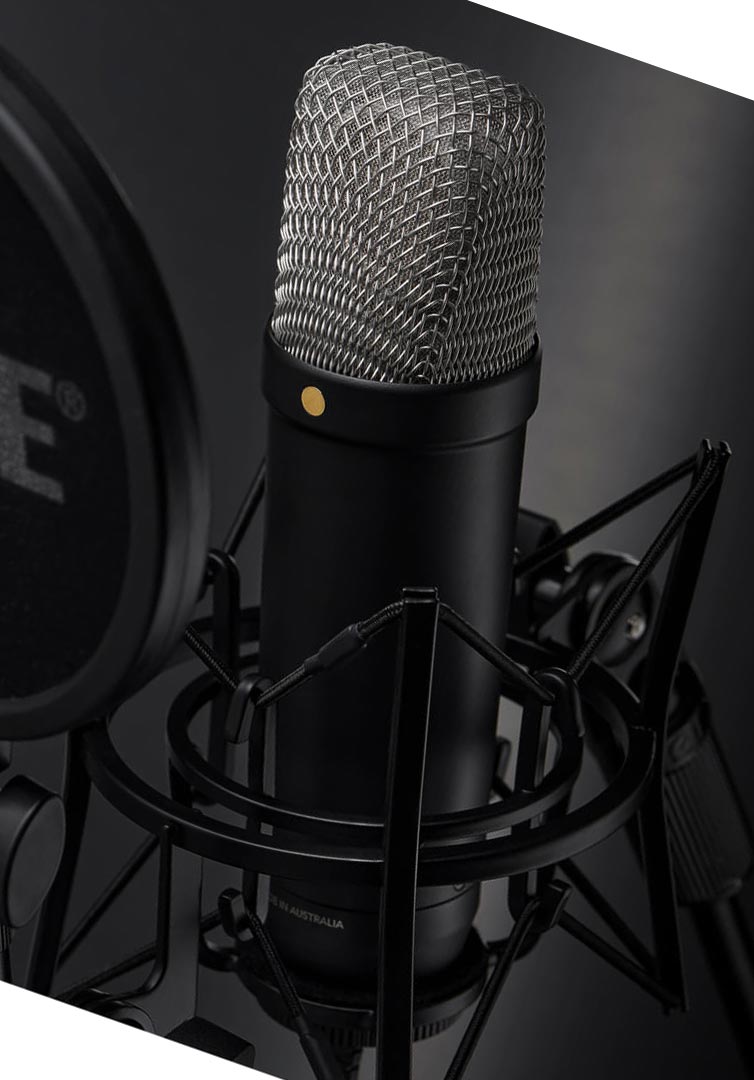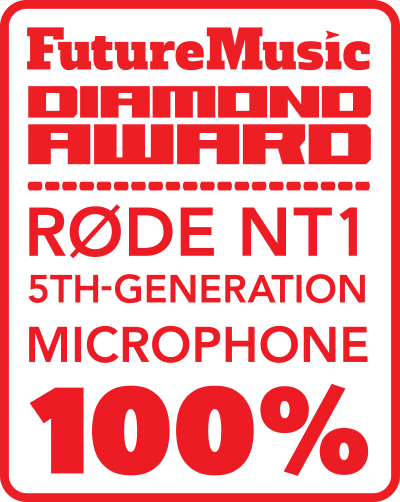How RØDE continuously offers products that users need married to innovative features should be a blueprint to other major manufacturers. Case in point, RØDE’s fifth-generation NT1 condenser microphone. A perennial best-seller for the Australian company, the NT1 has often be the go-to choice for musicians looking for their first quality microphone. Not only do you obtain surprising quality for your hard-earned coin, but RØDE goes above and beyond by including a slew of excellent accessories. We subjected the new NT1 to a punishing long-term test with multiple reviewers (their impressions in quotes below) and came away quite impressed.


For a limited time only! Up to 80% off all Waves Bundles. PLUS click the banner above or the Go button for an additional 10%! This is Waves best deal yet! Get yours today before this special ends! Go!

Unlike other manufacturers, RØDE includes all the accessories you need.
To be fair, the NT1 wasn’t always all that in terms of quality. Earlier versions of the NT1 didn’t stand the test of time with some components failing due to cost-cutting Chinese manufacturing that ended up betraying the brand. However, as RØDE has matured as a company, their command over the manufacturing process has steadily increased and quality control has improved significantly now that everything is constructed in Sydney, Australia. The fifth-generation NT1 showcases this prowess. When compared to earlier versions, the new NT1 has been refined with tighter reveals, better quality components and a more refined aesthetic. For this balanced and objective review, each of our evaluators spent a month with the NT1 and utilized it in a wide-variety of real world applications.
“For 250 bucks, it’s absolutely mind-boggling what RØDE gives you”
“For 250 bucks, it’s absolutely mind-boggling what RØDE gives you,” kicked off our first reviewer who felt like unboxing the NT1 was “like Christmas morning” with “one gift coming after another.” He isn’t wrong. RØDE not only gives you the microphone, which comes in either silver or black, but also a shock mount, double-sided pop screen, a 6-meter Canare XLR cable, a 3 meter USB-C cable and a dust cover. Why the USB-C cable? The 5th-Gen NT1 is a hybrid microphone. It contains both a XLR and USB-C connection in a “very clever” connector on the bottom of the mic, which the company has patented. This means you can either plug it into a mixer, preamp or sound card via the XLR, or directly into your computer with 192kHz resolution and unclippable 32-bit floating point output. Not enough for you? How about only 4db of A-weighted self-noise.

The RØDE NT1 5th-Gen is a hybrid analog and digital microphone.
All this action starts with the large diaphragm, HF6 1-inch gold-sputtered condenser capsule with a cardioid recording pattern. Feeding into RØDE’s built-in Revolution Preamp, the pressure gradient capsule delivers 20Hz – 20kHz of frequency response to provide full dynamic range for all your recording needs. The audio interface also contains DSP effects by Aphex, including Big Bottom, Exciter a high-pass filter, noise gate and a compressor. However, you’ll need RØDE’s Connect and Central middleware to employ these effects. While our reviewers found these effects would “work in a pinch,” they would have preferred the mic to have “a built-in reverb.”
The big news is the 32-bit float digital output. RØDE claims this is a “world-first” and that this “revolutionary format allows you to record everything from a whisper to a scream.” While all that magical marketing language may sound enticing in an advertisement, we understand you want to know how it actually works. We get it. According to our reviewers, the big selling point is being able to “still use takes when the needle pins.” Recording percussionists, raging vocalists and anyone else who can suddenly “go ballistic” at a moments notice means that those sessions “don’t get instantly tossed.”

According to our reviewers, the big selling point with the NT1’s 32-bit float is being able to “still use takes when the needle pins.”
Coupled with the low noise floor, the 32-bit feature resulted in capturing everything from the most delicate performances to absolute mayhem — all in the same take. The key is to make sure that your recording software is set to 32-bit float mode. Please note, not all software can record in this format and there may even be differences between the same program on different platforms. For instance, one of our reviewers noted that Adobe Audition can record 32-bit float on the Mac, but not on the PC. Another item to understand is that you can still clip recordings in 32-bit float mode. If you hear clipping while monitoring the audio, then you should simply back off the gain. That said, you can still remove the clipping after the recording is accomplished. It may sound slightly confusing, but it makes more sense once you start working in the 32-bit float world. “I don’t know exactly what’s going on here, but I LIKE it!” declared one reviewer.

One of our reviewers, who had the previous generation of the NT1, didn’t hear a difference between his model and the new 5th-Gen. This is most likely because they contain the same capsule design. However, a NT1-A owner did notice a distinctive difference. When asked whether the new features of the NT1 5th-Gen warranted an upgrade, both didn’t hesitate to say “absolutely,” especially at this price point. “With all the new features, first-class accessories and the 32-bit float USB-C connectivity? It’s not even a question. Take my money.”
RØDE NT1 5th-Gen Specifications:
- HF6 1″ Gold-Sputtered Capsule – Cardioid Pattern Condenser Microphone
- Frequency Range: 20Hz – 20kHz
- Maximum SPL: 142 dB SPL
- Equivalent Noise (A-Weighted): 4dBA
- XLR Analog and USB-C Digital Hybrid Output
- Sensitivity: -32 dB re 1 Volt/Pascal (25 mV @ 94 dB SPL) +/- 2 dB @ 1 kHz
- Bit Depth: 24-bit / 32-bit floating point
- Sampling Rate (kHz): 48 / 96 / 192
- Weight: 308 grams
- Dimensions (millimetres): Length: 52 / Width: 52 / Height: 189

The easiest way for electronic musicians to get their music onto Spotify, Apple Music, iTunes, Amazon Music, Tidal, Instagram, Facebook, TikTok, Pandora, Twitch & much more! Click the banner above or the Go Button to save 7% off of your signup! Go!
Conclusion
RØDE understands their audience. Musicians who are looking for products that “punch way above its weight class,” feature “huge value” and “deliver solid audio performance” will not find a better condenser microphone in this class. Add innovative design, 32-bit float technology and quality accessories, and the competition just falls away. Highest recommended.
RØDE 5th-Gen NT1 Microphone Rating: 100%
Cheers:
+ Bang-For-The-Buck
+ Innovative
+ 32-bit Float
+ Included Accessories
+ Build Quality
Jeers:
– None


RØDE’s NT1 5th-Gen Condenser Microphone costs $250 and is available now.
The Future: For the 6th Generation NT1, we’d love to see the microphone have built-in effects that doesn’t require the Connect/Central middleware. A minijack output on the microphone would also be a nice option for zero-latency monitoring.








